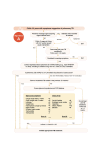Evaluating the diagnostic accuracy of WHO-recommended treatment decision algorithms for childhood tuberculosis using an individual person dataset: a study protocol
- PMID: 40967651
- PMCID: PMC12458782
- DOI: 10.1136/bmjopen-2024-094954
Evaluating the diagnostic accuracy of WHO-recommended treatment decision algorithms for childhood tuberculosis using an individual person dataset: a study protocol
Abstract
Introduction: In 2022, the WHO conditionally recommended the use of treatment decision algorithms (TDAs) for treatment decision-making in children <10 years with presumptive tuberculosis (TB), aiming to decrease the substantial case detection gap and improve treatment access in high TB-incidence settings. WHO also called for external validation of these TDAs.
Methods and analysis: Within the Decide-TB project (PACT ID: PACTR202407866544155, 23 July 2024), we aim to generate an individual-participant dataset (IPD) from prospective TB diagnostic accuracy cohorts (RaPaed-TB, UMOYA and two cohorts from TB-Speed). Using the IPD, we aim to: (1) assess the diagnostic accuracy of published TDAs using a set of consensus case definitions produced by the National Institute of Health as reference standard (confirmed and unconfirmed vs unlikely TB); (2) evaluate the added value of novel tools (including biomarkers and artificial intelligence-interpreted radiology) in the existing TDAs; (3) generate an artificial population, modelling the target population of children eligible for WHO-endorsed TDAs presenting at primary and secondary healthcare levels and assess the diagnostic accuracy of published TDAs and (4) identify clinical predictors of radiological disease severity in children from the study population of children with presumptive TB.
Ethics and dissemination: This study will externally validate the first data-driven WHO TDAs in a large, well-characterised and diverse paediatric IPD derived from four large paediatric cohorts of children investigated for TB. The study has received ethical clearance for sharing secondary deidentified data from the ethics committees of the parent studies (RaPaed-TB, UMOYA and TB Speed) and as the aims of this study were part of the parent studies' protocols, a separate approval was not necessary. Study findings will be published in peer-reviewed journals and disseminated at local, regional and international scientific meetings and conferences. This database will serve as a catalyst for the assessment of the inclusion of novel tools and the generation of an artificial population to simulate the impact of novel diagnostic pathways for TB in children at lower levels of healthcare. TDAs have the potential to close the diagnostic gap in childhood TB. Further finetuning of the currently available algorithms will facilitate this and improve access to care.
Keywords: Child; Clinical Decision-Making; Tuberculosis.
© Author(s) (or their employer(s)) 2025. Re-use permitted under CC BY. Published by BMJ Group.
Conflict of interest statement
Competing interests: None declared.
Figures


References
-
- Organization WH . Roadmap towards ending TB in children and adolescents. 3rd. 2023. edn.
-
- Organization WH . Geneva: World Health Organization; 2022. WHO consolidated guidelines on tuberculosis: module 5: management of tuberculosis in children and adolescents. - PubMed
-
- Gunasekera KS, Cohen T, Seddon JA. Annual Meeting of the Child and Adolescent TB Working Group; 2021. Treatment-decision algorithms for childhood pulmonary TB: review of individual-patient data (IPD)
MeSH terms
Grants and funding
LinkOut - more resources
Full Text Sources
Medical
Miscellaneous
